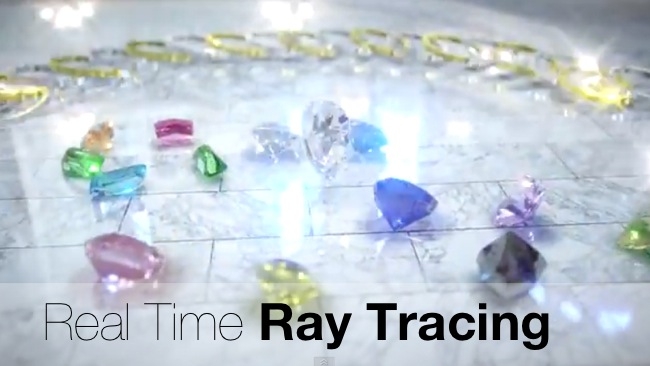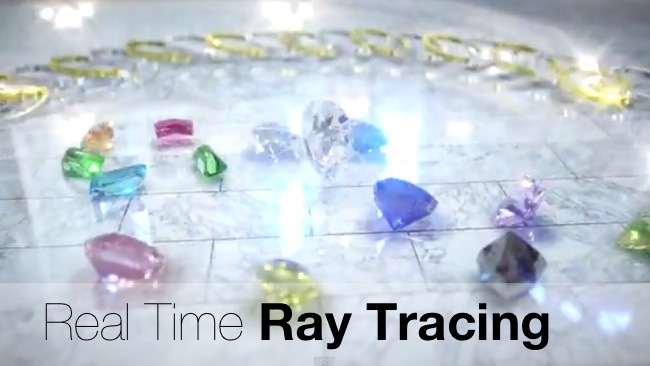
 Real-time Ray Tracing gets closer
Real-time Ray Tracing gets closer
Ray Tracing, which sits at the luxury end of the CGI spectrum, is hard to do in real time - but it's getting closer
Ray Tracing is probaby the most reliable way to make photo-realistic CGI images and animations. It takes into account the path of all rays of light coming into the virtual "camera", and what effects the objects in the path of that light have on it.
Essentially, the camera lens "looks" through the plane of the image, into a 3D virtual world beyond it.
And it works on a per-pixel basis, so images not only reflect (literally!) the nature of the world they occupy, but they can be very detailed as well.
And that's where there's a problem, because calculating the "life story" of every ray of light, for every pixel, takes a lot of processing power. Traditionally this has been the CGI technique that has stubbornly remained furthest away from being possible in real time.
But new techniques and newly available processing resources mean that real-time Ray Tracing may not be too far away. In fact, it's already here in certain, limited ways.
Here's a video that claims to be an example of real-time Ray Tracing. We don't have any details because the page that's linked-to from the video is in Japanese.
It's a little cliched, but is a great demonstration of what Ray Tracing can do that other techniques can't.
Sorry - we've just noticed that the video's been taken off YouTube!
Tags: Production


Comments